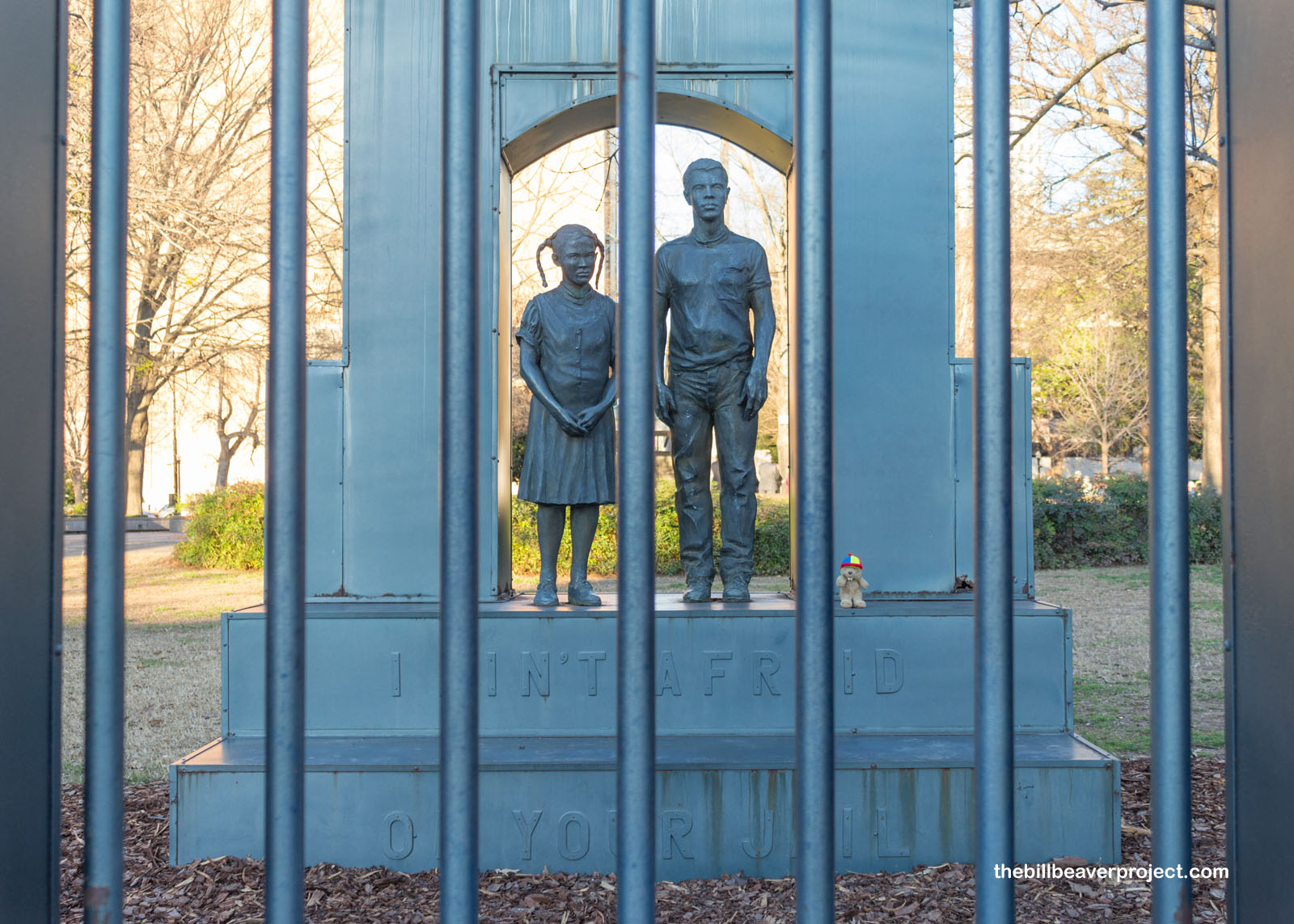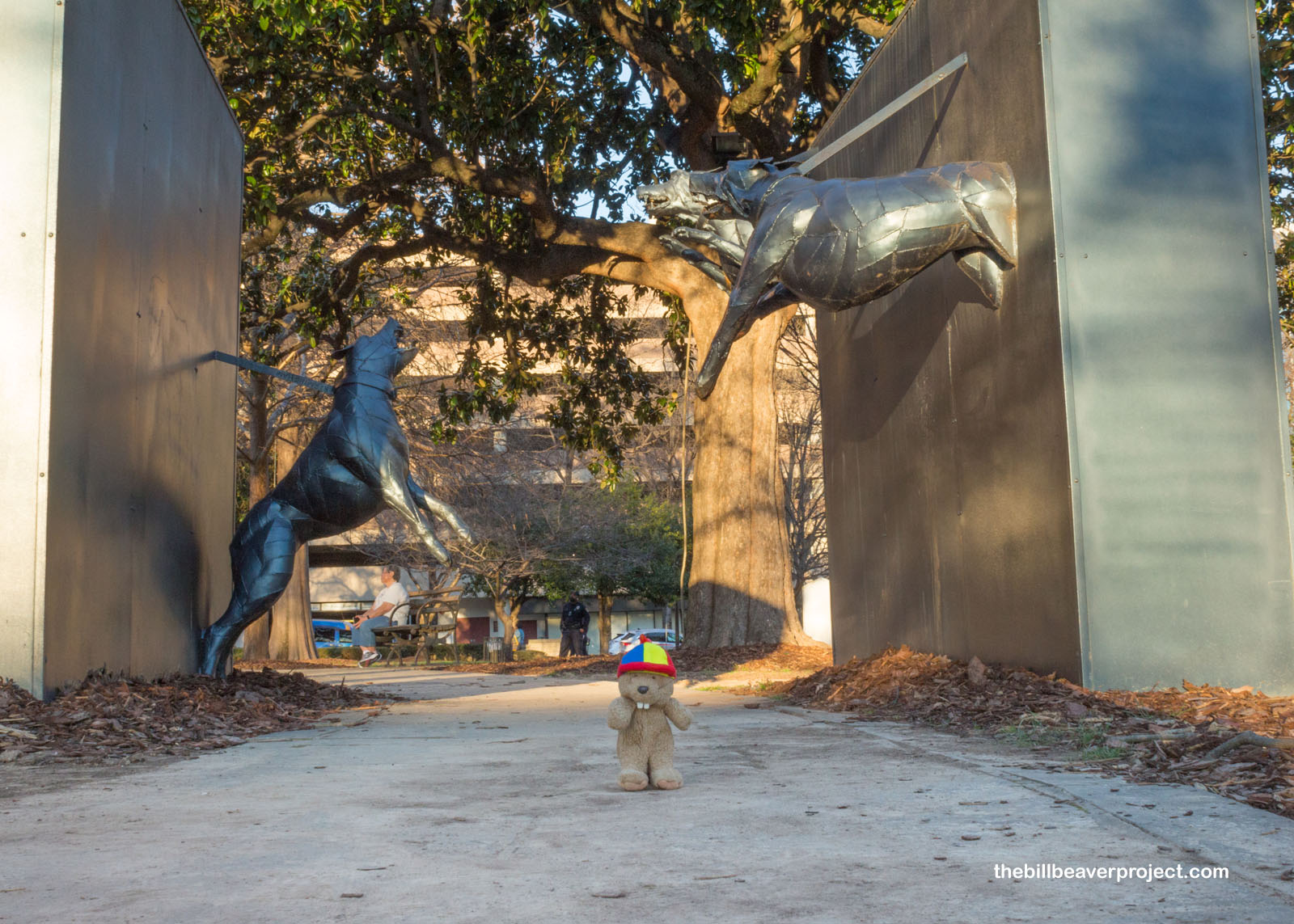
What Is Birmingham Civil Rights National Monument?
This collection of historic buildings and sculptures tells the story of Project C, one of the most harrowing stories from the Civil Rights fight in Birmingham, Alabama!
What Makes It Historical?
Birmingham of the early 1960s had been shaped by defiance to Brown vs. Board of Education, with some of the strictest segregation laws in the South. Rather than integrate public facilities on court order, Birmingham shut down parks, playgrounds, swimming pools, and golf courses! So many vigilantes ran amok between 1947 and 1965 that the city earned the nickname of “Bombingham!” With the NAACP not even allowed to operate in Alabama after an injunction in 1956, any push for change fell to church leaders like Fred Shuttlesworth, who had been the membership chairman for Alabama’s NAACP.
In January of 1963, after years of campaigning, Reverend Shuttlesworth invited the Southern Christian Leadership Conference (SCLC) to Birmingham, teaming up with Martin Luther King, Jr, Wyatt Walker, James Bevel, Andrew Young, and Rev. Ralph Abernathy for a 5-week campaign that came to be called Project C (for Confrontation)! Based out of the A.G. Gaston Motel, Project C’s goals included desegregation of lunch counters and public facilities, release of jailed demonstrators, fair hiring practices, and reopening the shuttered parks! To get there, they would have to combine the tactics of boycotts and demonstrations!
Project C launched on April 3, 1963 and ran for five weeks, violently opposed every step of the way by Public Safety Commissioner, “Bull” Connor, who brutally arrested anyone he could. By the end of April, most of Project C’s participants were in jail, and the leaders took the contoversial tactic of recruiting high school kids for protests. The children’s marches ran from May 2 to 7th and the brutal responses to them attack dogs and high-pressure water cannons) unified the Black community behind Project C and captured the nation’s attention! The organizers made a truce with local business leaders, which didn’t extend to the government, and that truce inspired months of bombings, which inspired riots, which inspired President Kennedy to send 3,000 federal troops into Birmingham to tamp down on the violence. Pressure from the Birmingham campaign boosted the Civil Rights Act of 1964!
How Can I #HelpTheHelpers?
- Volunteer at the Birmingham Civil Rights Institute!
- Donate to the Birmingham Civil Rights Institute!
- Be a responsible visitor! Remember the old adages: Pack out what you pack in! Take nothing but pictures and leave nothing but footprints!
How Do I Get There?
1510 5th Ave N
Birmingham, AL 35203
(Take Me There!)
When Should I Visit the Park?
Visit the outdoor part of the monument any time you like! When I visited, it was still under construction, but the Birmingham Civil Rights Institute is open Tuesday through Saturday from 10:00 AM until 3:00 PM!
More Photos




